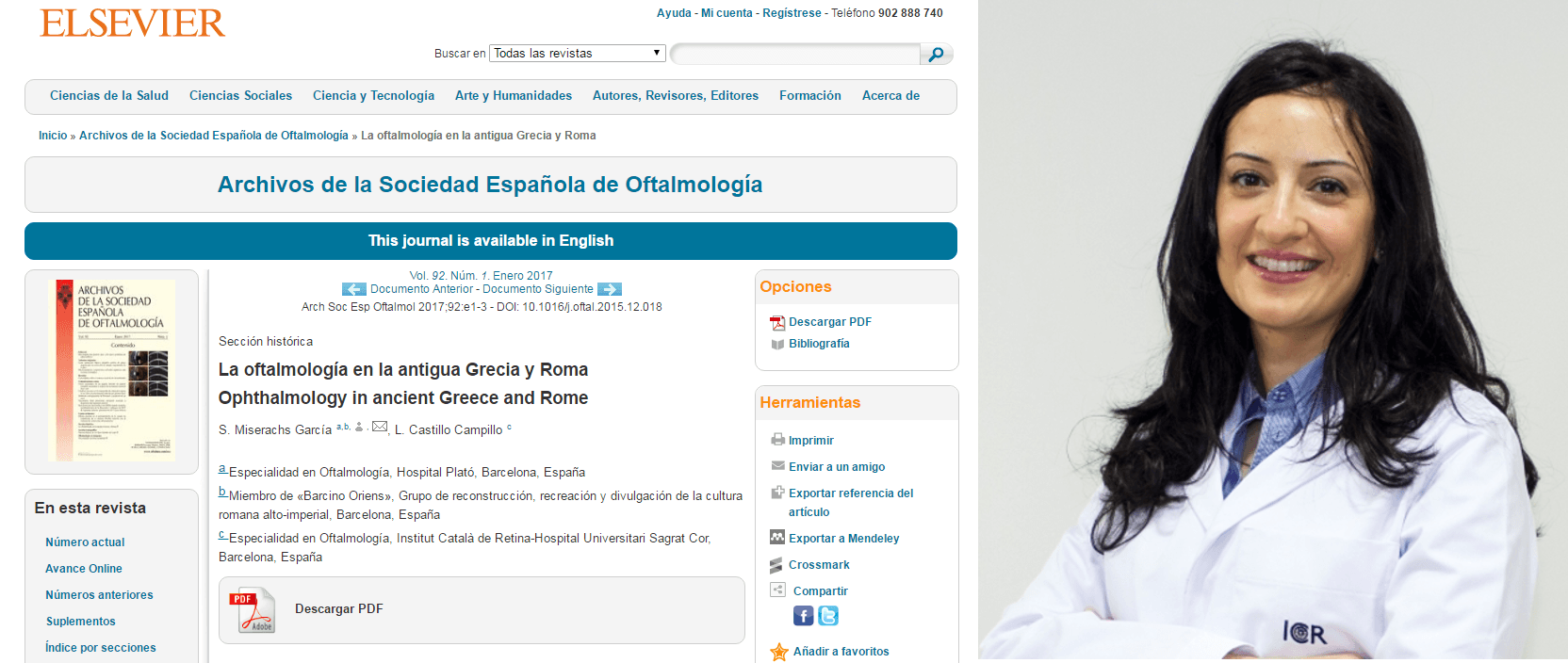
Doctor Castillo, Head of Neuro-ophthalmology and Teaching Department at ICR, has published an article under the name La oftalmología en la antigua Grecia y Roma (Ophthalmology in ancient Greece and Rome) as a coauthor alongside doctor Sergio Miserachs.
The article has been published in the historical section of Archivos de la Sociedad Española de Oftalmología journal and addresses a historical perspective of eye care knowledge during the ancient Greek and Roman times, going from the discovery of optic nerve by Alcmaeon of Croton in the 5th century, through Aristotle, who discovered the existence of the retina and, unknowingly, the optic chiasm, or Aulus Cornelius Celsus, who brought together the knowledge of Alexandrian school, to the description of the corneal curvature, the front position of the crystalline lens and the existence of the choroid by Galen in the 2nd century AD.
Throughout the article, the terms used in ancient Greek and Roman times and how they evolved through the centuries until acquiring current designations are also analyzed.
Moreover, the article analyses eye treatments used during that era, such as eye drops, medicines and solutions containing lots of ingredients used by Hippocrates and his disciples and by the Alexandrian school, besides the techniques used to treat cataracts, that usually caused it to be dislocated into the vitreous humor, thus implying high risks for the patient’s vision.
Nowadays, techniques have evolved, but Dr. Castillo and Dr. Miserachs’ article remind us that a significant basis of Ophthalmology has its origin in the Greco-Roman period.
The entire article can be read by clicking on this link.
Contact us or request an appointment with our medical team.